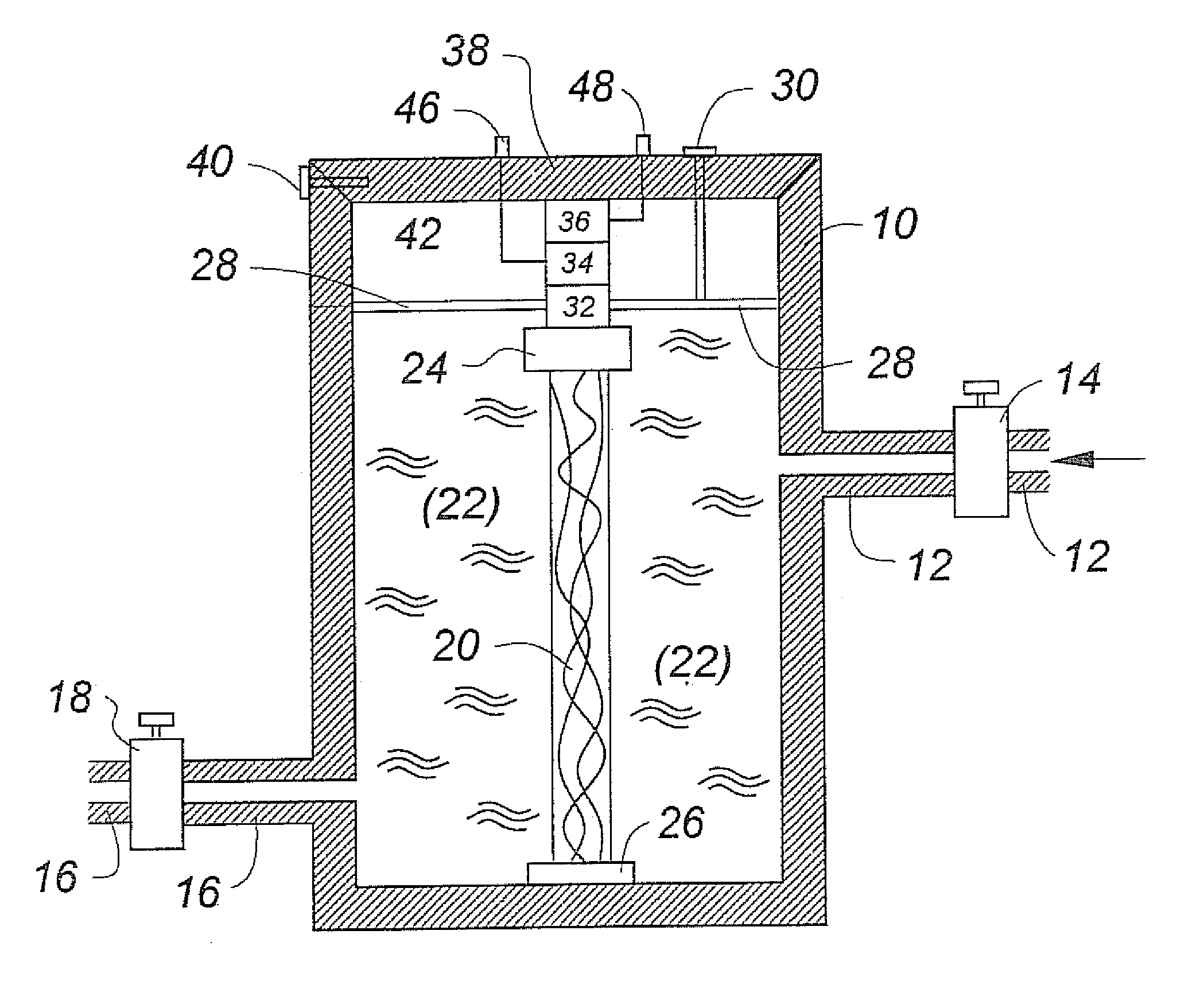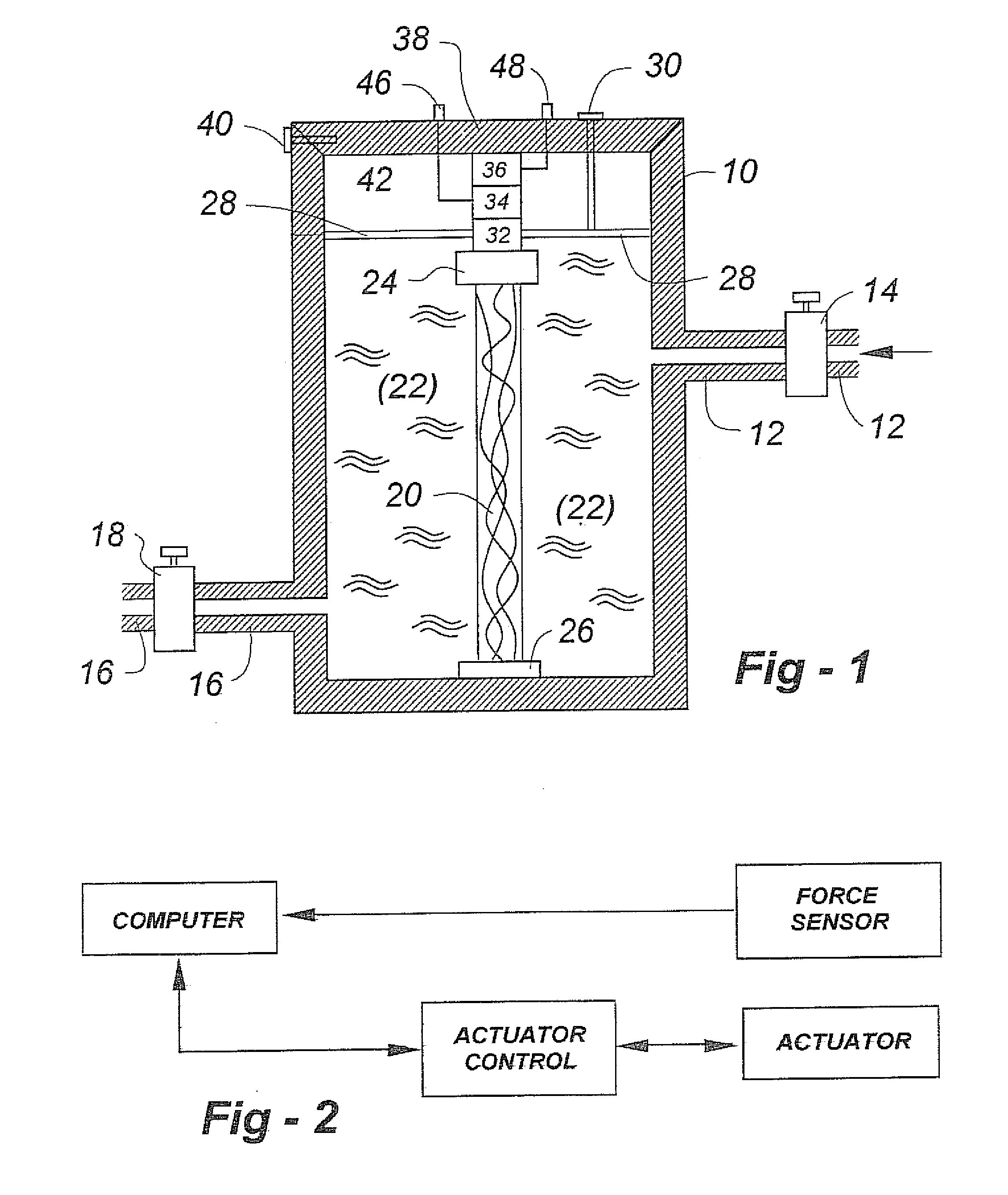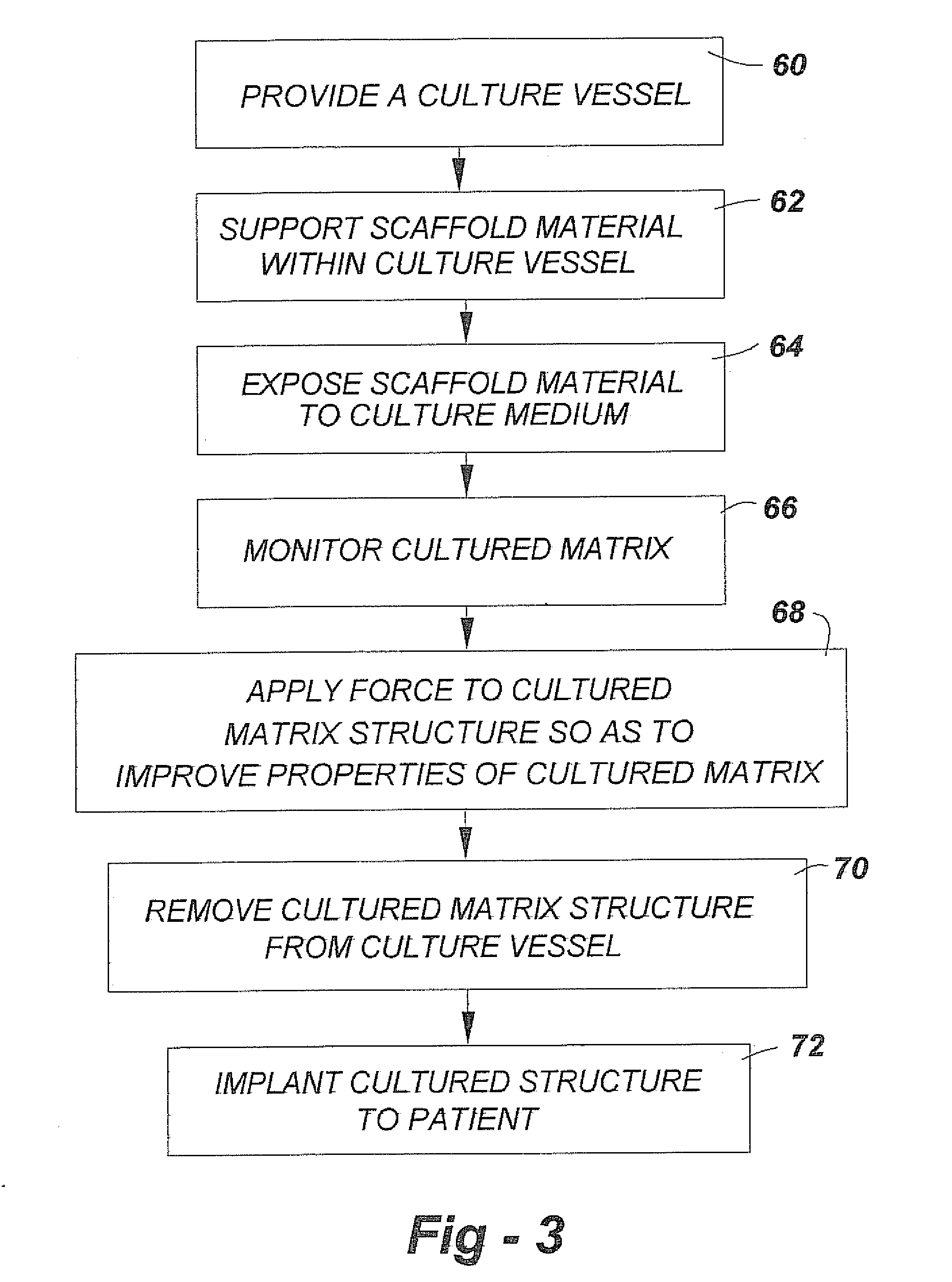In-vitro mechanical loading of musculoskeletal tissues
a musculoskeletal tissue and in-vitro mechanical technology, applied in the direction of skeletal/connective tissue cells, biochemistry apparatus, biochemistry apparatus and processes, etc., can solve the problems of poor mechanical loading of femoral condyle, poor mechanical loading of high-mechanical patella, and lack of mechanical strength and structural properties of products
- Summary
- Abstract
- Description
- Claims
- Application Information
AI Technical Summary
Benefits of technology
Problems solved by technology
Method used
Image
Examples
system embodiment
[0032]FIG. 2 shows a system according to the present invention. A computer 50 receives a force signal from force sensor 52. The computer 50 also has a software application program adapted to send a signal to the actuator control, so as to control the actuator.
Compression Modulus
[0033]The program determines the compression modulus of the bone growth from the ratio of the force measured to actuator displacement. The actuator is then controlled so as to apply a force correlated (for example, proportional to) the compression modulus of the bone.
[0034]An effective compression modulus M can be defined by
M=ΔXF
where F is the applied force, and ΔX is the actuator displacement or other equivalent measure of bone compression.
[0035]Equivalently, the modulus can be determined by applying a force to a cultured structure, and monitoring the consequent displacement. A force provider and displacement sensor can be used in place of an actuator (providing displacement) and a force sensor.
Improved Meth...
PUM
| Property | Measurement | Unit |
|---|---|---|
| force | aaaaa | aaaaa |
| forces | aaaaa | aaaaa |
| compressive force | aaaaa | aaaaa |
Abstract
Description
Claims
Application Information
 Login to View More
Login to View More - R&D
- Intellectual Property
- Life Sciences
- Materials
- Tech Scout
- Unparalleled Data Quality
- Higher Quality Content
- 60% Fewer Hallucinations
Browse by: Latest US Patents, China's latest patents, Technical Efficacy Thesaurus, Application Domain, Technology Topic, Popular Technical Reports.
© 2025 PatSnap. All rights reserved.Legal|Privacy policy|Modern Slavery Act Transparency Statement|Sitemap|About US| Contact US: help@patsnap.com



